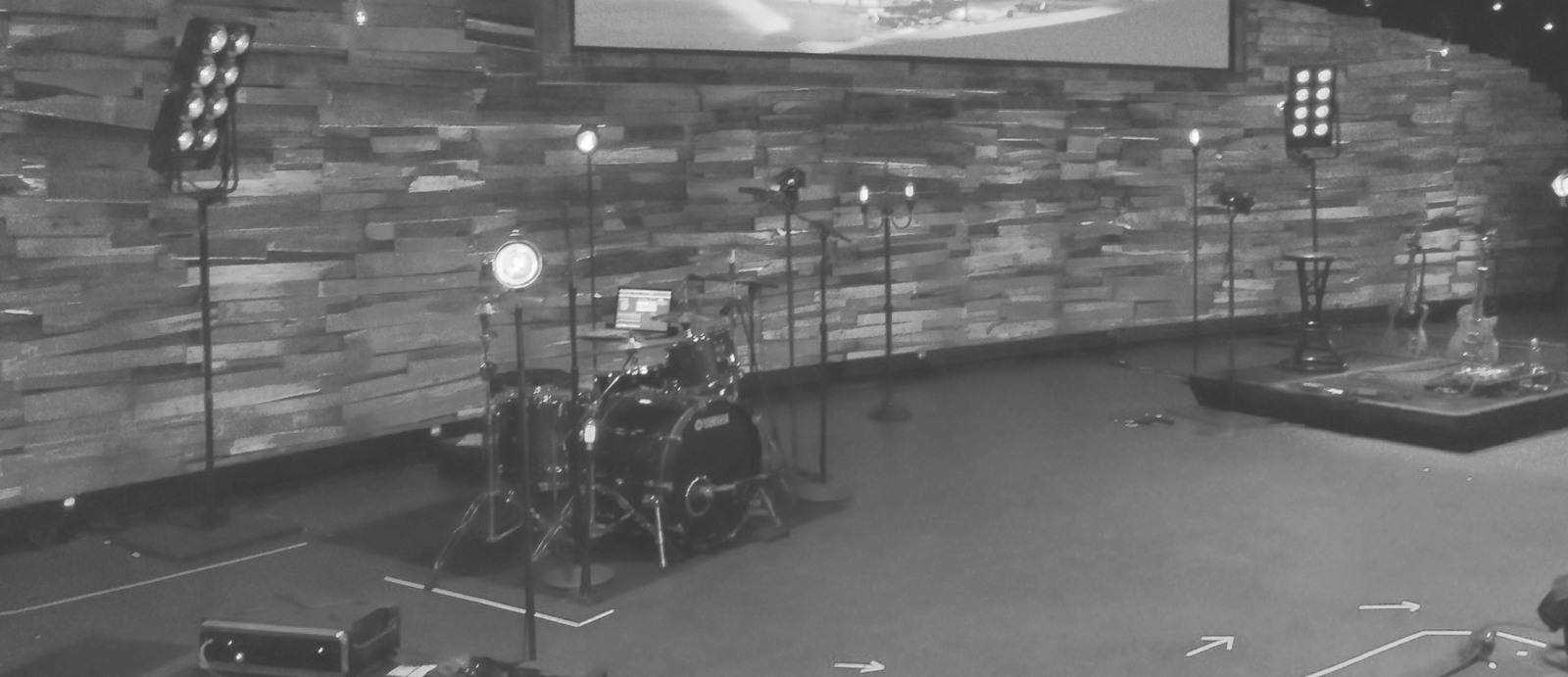
Everyone is looking for the cheapest, easiest and most effective way to redesign their stage for maximum impact. It has become part of our church cultural expectation and has even made its way into some job descriptions. In our pursuit of creativity, balanced by our realties of budget, we’ve explored coroplast, bubble wrap, skids, crumpled screens and painted twigs among a dozen other ideas we’ve seen on sites like churchstagedesignideas.com. Now throw a couple of LED lights on them and – voilá – you’ve created a new backdrop for your stage.
It’s that easy…right?
Well, maybe not that easy. But I do like introducing new stage designs and looks at our church on a regular basis. Beyond the cultural expectation and even the desire to be relevant, there are three reasons why I believe designing and redesigning your stage on a regular basis are important.
- It gives people the opportunity to get involved. There are always some people in your church who love to serve behind the scenes; creating, crafting, cleaning and curating ideas to serve the vision of your local church.
- It gives your church a sense of life. Healthy things grow, which means healthy things change. If the stage never changes, looks beat up, feels old and tired and has lost its life, subconsciously, people make that connection to the state of the church as a whole-right or wrong-it’s their perspective.
- It helps keep the culture of change at the forefront of your church. When the time comes to introduce a change that has a significant impact, the people in your church have, at a very base level, gotten used to the concept of change.
So with that understanding, let me offer you three simple and FREE ways you can redesign your stage today.
3 Simple + Free Ways to Redesign Your Stage Click To Tweet
1. Clean It
I know this sounds really profound and inspiring, but I can’t believe how many churches overlook this simple step.
When asking our children if they’ve cleaned their rooms, my wife follows the almost certain, “Yes”, with the question, “Is it your clean or my clean?” Meaning, is it done properly or are their things just thrown under the bed and in the closet (which nine times out of ten are the case). When we talk about cleaning the stage, it’s more than simply throwing out the half-emptied water bottles, sheet music from previous weeks and left behind wrappers from band practice the day before (though that is a great start). It’s about bringing back order and structure.
This also means taking pride and ownership of what you have and ensuring that everything has a place – on and off stage. Don’t turn your media storage room into your proverbial closet. When you take pride in your space, your team will take pride in their space. If you don’t model care and cleanliness, there is no way you can expect that from those who use it once or twice a month.
Tips:
- Use the correct length of cable for the job
- Run your cables along the path to avoid the spider effect on your stage
- Don’t be afraid of Gaffer Tape – it can be your best friend
- Avoid unnecessary clutter. If you’re not using it – remove it
- Position music stands off to the side, they don’t need to be the centre of attention
- If you can’t memorize your charts, put your sheet music in a black binder
I think you get the point. But it’s amazing how much a clean stage not only makes you feel proud – but also makes your audience more comfortable. Remember, everything communicates.
2. Balance It
Again, it comes down to the simple practice of bringing balance to your stage. Try to avoid the urge to cluster everyone and/or everything to one side of the stage – spread it out. Not only will this help give room to your musicians, but also help in your attempt to keep it clean. Don’t be afraid of negative (unused) space. Take your cue from the designers of Apple and allow your stage to breathe.
Tips:
- Use drums, pianos and keyboard as anchoring pieces to your stage
- Spread your singers out across the stage
- Separate your guitar players
- Consider the view from different angles of the room
- Tighten the filter on what is allowed on the stage
Balance doesn’t mean symmetry. This can be more of an art than a science, as each stage has its own challenges and opportunities. But approach this step with an open mind and don’t be afraid to ask for the thoughts and opinions of others.
3. Maintain It
Now that you’ve cleaned your stage and balanced your stage, it’s time to maintain it. This happens when you share the vision for the new approach with your team and create a strategy for maintaining it.
But remember vision leaks, so you’re going to have to get into the habit of constantly casting the vision of a clean and balanced stage. Unfortunately, no one will care as much as you. And that’s okay. But as you continue to add new people to your team, and relay the vision – again and again – you’ll slowly begin to build a new culture.
Tips:
- Make sure everything has a place, on and off stage
- Don’t be afraid of labels and taping off zones
- Create a pre-service and post-service checklist of things that need to get done and put away
- Empower team members to care for the stage as their own
- Don’t just simply ask your team to do something…show them how to do it
- Celebrate positive actions
I believe that this is the principle of stewardship that Jesus talks about in Luke 16. When we are faithful with what we have been given; when we work inside our box, God will honour our faithfulness and expand our box. You may not have everything you want, but for right now, it is what it is. The simple question then is, what are you going to do with it?
By applying these three simple and free steps, you’ll begin to build a culture of change, and even get the sense of a new and redesigned stage. But more than that, you’ll become good stewards of what God has entrusted to your care. And who knows, maybe God will begin to expand your box.





